Kingdom Plantae Subfamily Orchidoideae Subtribe Rhizanthellinae Scientific name Rhizanthella gardneri Order Asparagales | Family Orchidaceae Tribe Diurideae Genus Rhizanthella Rank Species | |
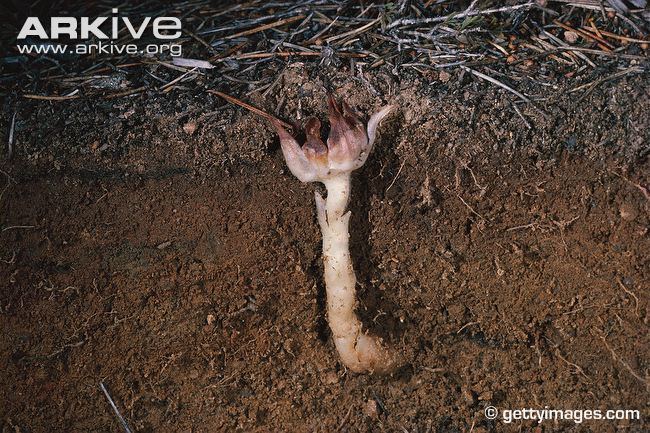 | ||
Similar Rhizanthella, Melaleuca uncinata, Rhizanthella slateri, Erythrina schliebenii, Tahina spectabilis | ||
Rhizanthella gardneri, also known as Western Underground Orchid, is a plant in the orchid family, discovered in the spring of 1928 in the wheatbelt of Western Australia.
Contents

Jack Trott had bent to investigate an odd crack that had appeared in his garden's soil, and had noticed a sweet smell that arose from the ground. Scraping away the soil, he soon uncovered a tiny white flower, about half an inch across, growing underground. What he had found was an entirely new type of orchid. The discovery generated such excitement that a wax model was toured around the British Isles.

The white leafless plant is made up of a fleshy underground storage stem (or tuber), which produces flower head consisting of around 150 tightly packed, tiny flowers. Unlike any other orchid in Australia, the Western Australian underground orchid remains completely underground for its whole life. Not being able to obtain the sun's energy, it instead feeds on the broom honeymyrtle, a shrub. It is linked to it by a mycorrhizal fungus named Thanatephorus gardneri.
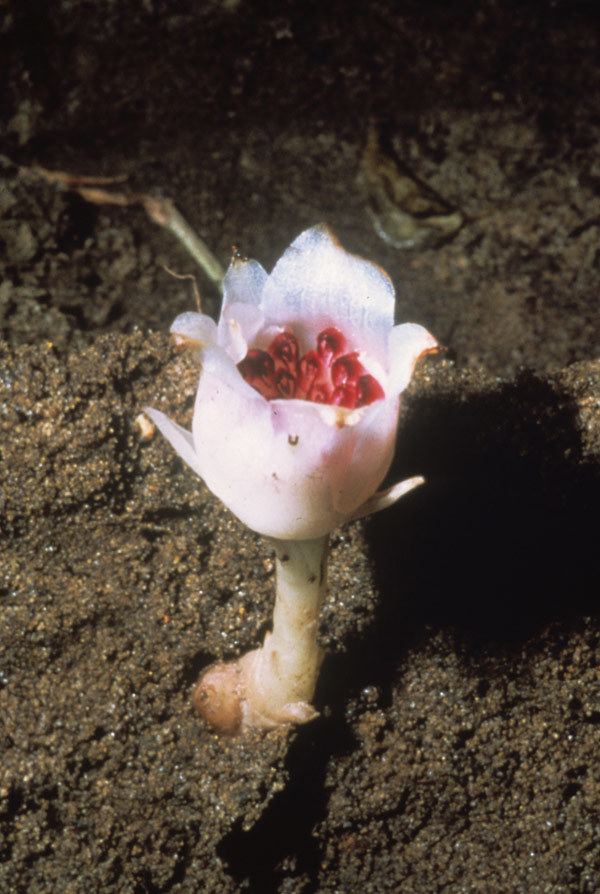
This particular orchid is a myco-heterotroph as it relies completely on the broom honeymyrtle and fungus for its nutrients and carbon dioxide. Having received this from the fungus the plant is then able to convert the water, nutrients and carbon dioxide into the energy needed for growth and maintenance.
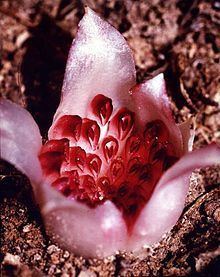
The plant blooms in May and June and measures 2.5–3 cm. The flower head contains 8 to 90 small dark maroon flowers.
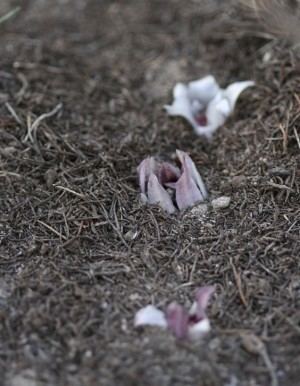
Rhizanthella gardneri reproduces vegetatively by which it can produce three daughter plants. They also undergo sexual reproduction, and underground insects such as termites and gnats are known to pollinate the flowers, attracted by the fragrance. The pollinated flower will then take six months to mature. In all studied flowers these were not dispersed and eventually decayed, thus releasing their seeds. It may be, however, that native marsupials were important dispersal agents, but substantial findings are hard to come by as only 19 mature specimens of the orchid are known to currently exist in the wild and only 300 specimens have been collected to date.
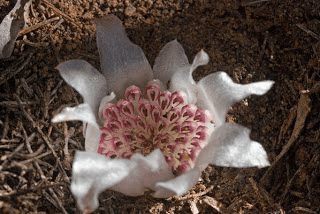
Distribution
The species is endemic to Western Australia, six populations are currently known; these are found in the central wheatbelt near to the town of Corrigin and from locations close to the south coast.
Conservation
The species is classified as Vulnerable on the 1997 IUCN Red List of Threatened Plants, and listed on Appendix II of the Convention on International Trade in Endangered Species of Wild Fauna and Flora (CITES).
Large areas of bushland have been developed for agriculture in much of southern Western Australia, and it is likely that this loss of habitat is one of the main causes of the reduced population of Rhizanthella gardneri. Further threats to habitat include drought, the encroachment of salt and a decline in health of the host plant. Remaining populations of the underground orchid are isolated in the fragments of habitat that persist today.
Three of the known populations of Rhizanthella gardneri are protected within nature reserves, and a concerted initiative has been launched to safeguard this species for future generations. A partnership between the Millennium Seed Bank of the Royal Botanic Gardens, Kew, Australia's Endangered Species Program and Perth's Kings Park and Botanic Gardens are undertaking DNA fingerprinting and seed-banking of this rare orchid in an attempt to establish a propagation programme.
